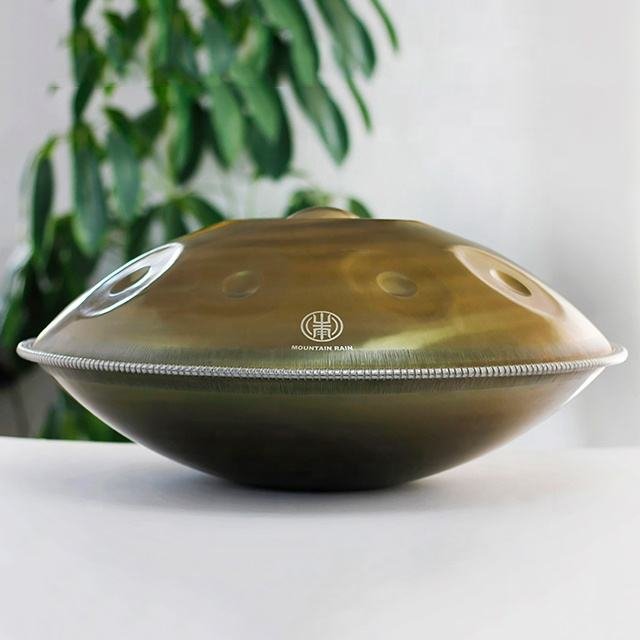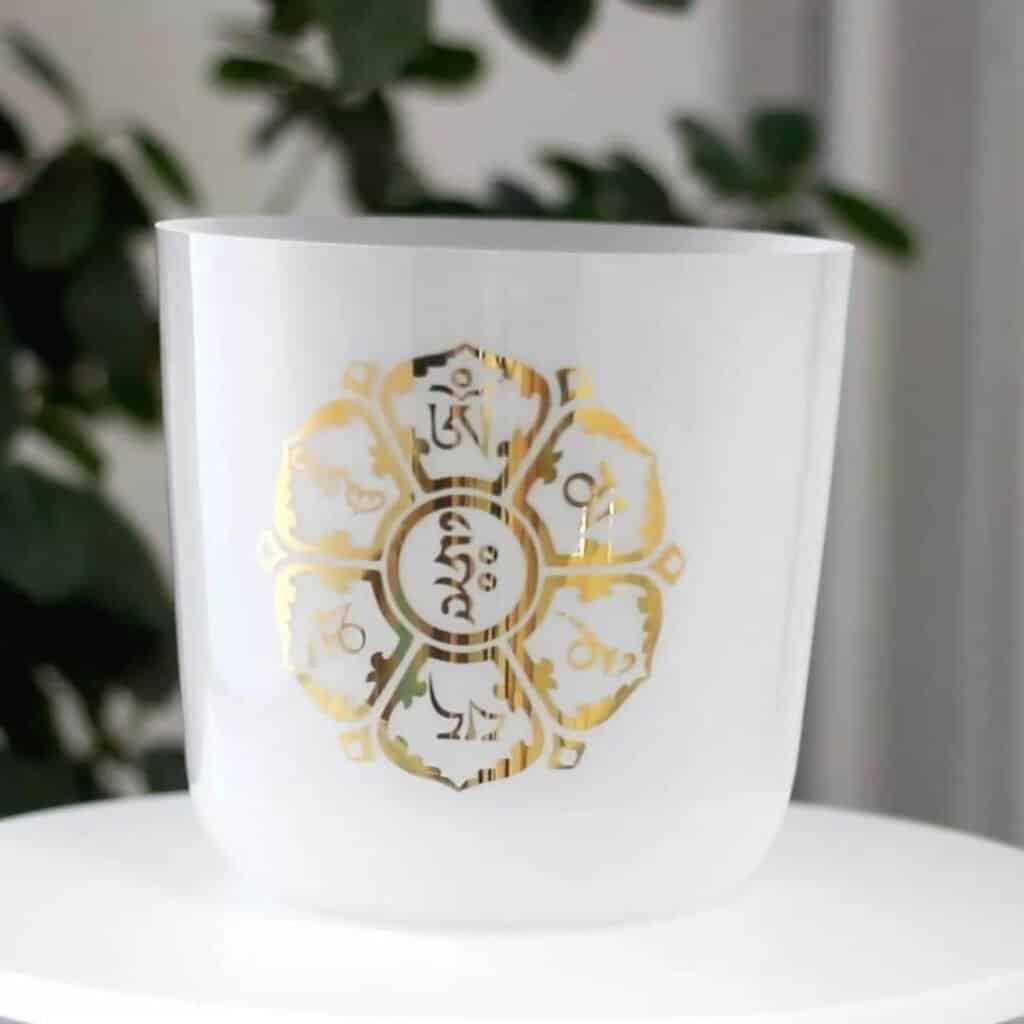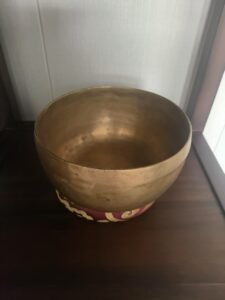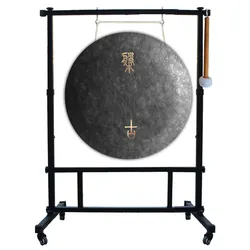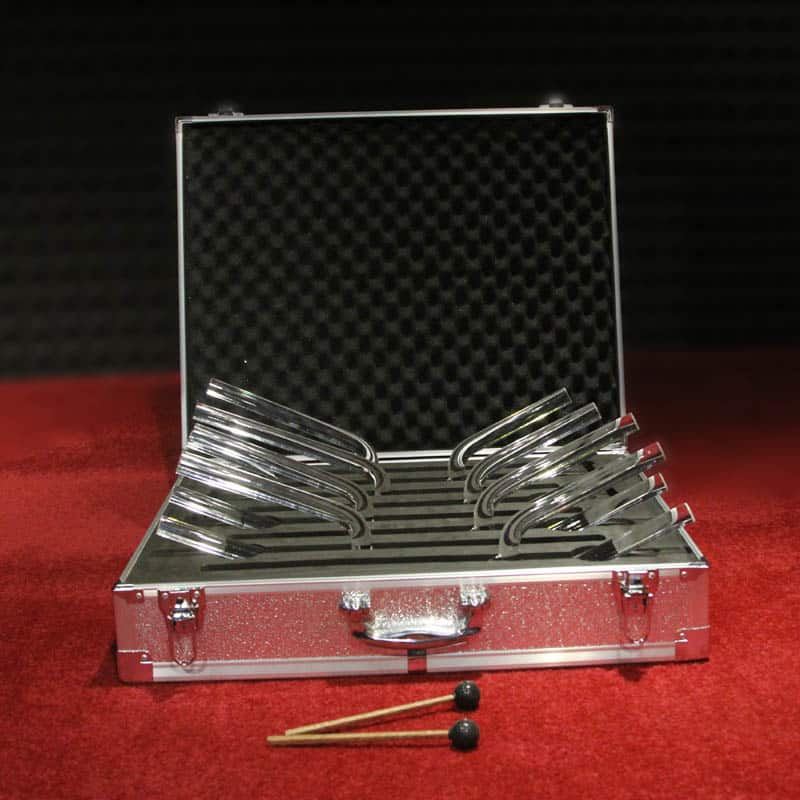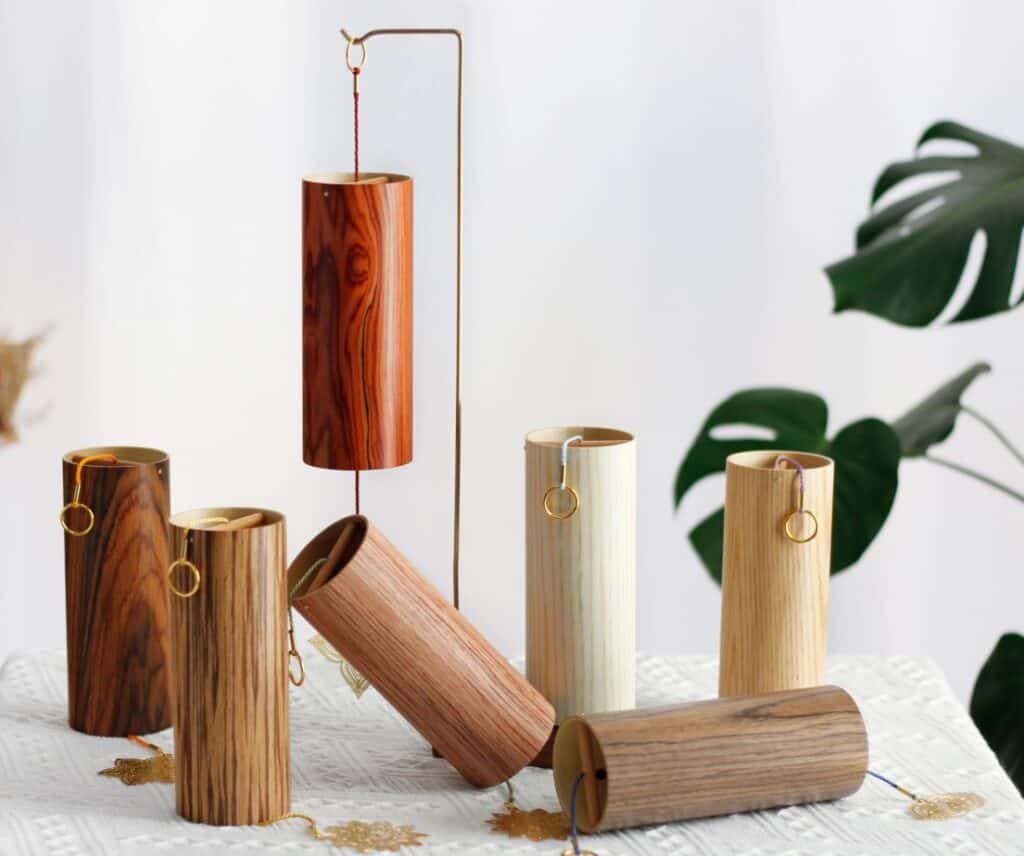Crystal merkabas represent one of the most fascinating intersections of sacred geometry, crystal healing, and meditation practice. These precisely cut geometric forms, featuring two interlocking tetrahedrons that create a three-dimensional star, have captivated spiritual practitioners and crystal enthusiasts for generations. The merkaba’s unique shape is believed to represent the vehicle of light that connects body, mind, and spirit, making it a powerful tool for meditation and energy work.
The growing popularity of crystal merkabas in sound therapy and energy healing reflects their versatility and profound energetic properties. Unlike simple crystal points or tumbled stones, merkabas combine the inherent properties of their crystal material with the amplifying effects of sacred geometric form. This combination creates tools that many practitioners find particularly effective for focusing intention, enhancing meditation, and creating energetic harmony in healing spaces.
Whether you’re seeking a personal meditation companion, a centerpiece for your crystal collection, or a professional tool for therapeutic practice, choosing the right crystal merkaba involves understanding multiple factors that influence both aesthetic appeal and energetic effectiveness. The quality of the crystal material, precision of the geometric cuts, size considerations, and intended applications all play crucial roles in determining which merkaba will best serve your needs.
This comprehensive guide will navigate you through every aspect of crystal merkaba selection, from understanding different types and evaluating quality to matching crystal properties with your specific intentions. You’ll discover how to assess authenticity, compare different crystal varieties, and make informed decisions that ensure your merkaba becomes a valued tool in your spiritual and healing practices.

Understanding Crystal Merkaba Types and Styles
Crystal merkabas come in diverse varieties that cater to different aesthetic preferences, energetic needs, and practical applications. Understanding these variations helps you make informed choices that align with your specific requirements and personal resonance with different crystal energies.
Traditional clear quartz merkabas represent the classic choice for many practitioners due to quartz’s reputation as a master healer and universal amplifier. Clear quartz merkabas offer versatility in application, working well for general meditation, energy cleansing, and amplifying the properties of other crystals in your collection. The transparency of clear quartz also showcases the geometric precision of well-crafted merkabas, making structural quality immediately apparent.
Clear quartz merkabas tend to produce bright, clean energy that feels neutral and adaptable to various intentions. This makes them excellent choices for beginners who want to explore merkaba meditation without committing to the specific energetic signatures of colored crystals. The clarity also makes clear quartz merkabas popular for display purposes, where their geometric beauty can be fully appreciated.
Colored crystal varieties expand the energetic possibilities significantly, with each crystal type bringing its unique properties to the merkaba form. These specialized merkabas allow practitioners to combine the geometric amplification effects with specific crystal energies that support particular healing or meditation goals.
The precision and quality of colored crystal merkabas can vary significantly depending on the hardness and working properties of different crystal types. Harder stones like amethyst and citrine often hold sharp, precise edges better than softer materials, while some crystals may be more prone to chipping or surface irregularities during the cutting process.
Size differences create important practical implications that extend beyond simple aesthetic preferences. Smaller merkabas, typically ranging from 1 to 3 inches, offer excellent portability and work well for personal meditation, pocket carrying, and intimate healing work. These compact sizes make them accessible for regular handling and easy integration into daily spiritual practices.
Medium-sized merkabas, approximately 3 to 6 inches, provide a balance between presence and practicality. These sizes work well for desktop displays, altar centerpieces, and therapy rooms where the merkaba needs enough visual impact to anchor the space while remaining manageable for positioning and care.
Large merkabas, exceeding 6 inches, create commanding presence and powerful energetic influence but require more consideration for placement, storage, and handling. These impressive pieces often serve as focal points for meditation rooms, healing centers, or significant crystal collections where their size enhances their role as energetic anchors.
Handcrafted versus machine-made quality distinctions significantly impact both the appearance and energetic properties of crystal merkabas. Handcrafted merkabas often display subtle variations and character marks that reflect the artisan’s skill and attention to individual pieces. These variations can create unique energetic signatures while potentially showing slight asymmetries that some practitioners find adds to their appeal.
Machine-made merkabas typically offer more consistent geometric precision and standardized proportions, which some practitioners prefer for their mathematical accuracy and uniform appearance. However, the mechanical production process may lack the energetic imprint that handcrafting can provide.
Single point versus multi-point designs offer different geometric expressions of the merkaba form. Traditional merkabas feature clean, sharp points that create precise geometric forms, while some variations include rounded or modified points that may appeal to different aesthetic preferences or practical considerations.
The sharpness of points affects both the visual impact and practical handling of merkabas. Very sharp points create stunning geometric precision but require more careful handling to prevent chipping or injury, while slightly rounded points may be more durable and safe for regular handling while maintaining the essential geometric form.
Special editions and unique artistic variations expand the traditional merkaba concept to include innovative designs that incorporate additional elements like metal components, multiple crystal types, or modified geometric proportions. These creative interpretations can offer unique aesthetic appeal and energetic combinations while maintaining the essential merkaba structure.
When considering special variations, evaluate whether the modifications enhance or detract from your intended use. Some artistic additions may complement meditation practice, while others might serve primarily decorative purposes that don’t align with practical spiritual applications.
Essential Features to Consider When Buying
Online shop:https://dorhymigroup.com/product/crystal-merkaba/
Wholesale option: https://dorhymi.com/crystal-singing-instrument/
Selecting a quality crystal merkaba requires careful evaluation of several key features that directly impact both the aesthetic appeal and functional effectiveness of your chosen piece. Understanding these critical elements helps you distinguish between superior craftsmanship and inferior products while ensuring your investment provides lasting satisfaction.
Crystal quality and clarity standards form the foundation of any exceptional merkaba. High-grade crystal should exhibit consistent transparency or color saturation throughout the structure, with minimal internal flaws, inclusions, or cloudiness that might detract from the overall appearance or energetic flow. Natural crystals may contain some inclusions, but these should enhance rather than diminish the stone’s beauty and should not compromise structural integrity.
When examining crystal quality, look for uniform color distribution in tinted varieties and consistent clarity that allows light to pass through the structure effectively. Premium crystals should feel substantial and dense, indicating proper crystal formation and density that supports both durability and energetic resonance.
Surface quality directly affects both the visual appeal and energetic properties of crystal merkabas. Examine all faces for scratches, chips, or polishing irregularities that might indicate poor craftsmanship or handling damage. Each face should display smooth, even polishing that creates consistent light reflection and enhances the overall geometric beauty.
Precision of geometric cuts and symmetry represents perhaps the most critical aspect of merkaba quality assessment. The merkaba’s power derives partly from its mathematical precision, so evaluating geometric accuracy becomes essential for both aesthetic and energetic considerations. Each of the eight triangular faces should be identical in size and proportion, with edges meeting at precise angles that create the characteristic star tetrahedron form.
Use calipers or rulers to measure key dimensions if precision is particularly important for your application. All edges should be straight and sharp, meeting at consistent angles that create the proper geometric relationships. Any significant asymmetry or proportion errors will be immediately apparent and may indicate poor craftsmanship or cutting errors.
The intersection points where edges meet should display clean, precise joints without gaps, overlaps, or irregular angles. These junction points are structurally critical and their quality often indicates the overall craftsmanship level of the entire piece.
Weight and balance considerations affect both the handling comfort and stability of your merkaba during use. Well-proportioned merkabas should feel balanced when held, with weight distribution that reflects the geometric symmetry. Excessive weight in any particular area may indicate density variations in the crystal material or geometric irregularities that affect balance.
Consider how the weight feels during extended handling, particularly if you plan to use the merkaba for meditation practices that involve holding or positioning the piece for extended periods. Very heavy merkabas may become uncomfortable during longer sessions, while extremely light pieces might feel insubstantial or lack the presence needed for effective energy work.
Surface finish and polish quality determine both the aesthetic appeal and energetic flow characteristics of crystal merkabas. Professional-grade polishing should create surfaces that feel smooth to the touch while displaying consistent light reflection across all faces. Poor polishing may leave rough spots, scratches, or dull areas that detract from the overall appearance and may interfere with energetic flow.
Examine the surface finish under different lighting conditions to identify any irregularities that might not be apparent under single light sources. Quality polishing should maintain consistency across different crystal areas, including edges and points where polishing becomes more technically challenging.
Durability factors become particularly important for merkabas intended for regular handling or transportation. Evaluate the crystal type’s inherent hardness and fracture resistance, considering how these properties align with your intended use patterns. Some crystals are naturally more fragile and require more careful handling, while others can withstand regular use without significant wear concerns.
Inspect edges and points for any existing chips or stress fractures that might indicate fragility or previous damage. Sharp points are particularly vulnerable to chipping, so assess whether the crystal type and craftsmanship can maintain these features under your expected use conditions.
Price range considerations should reflect the quality factors discussed above while aligning with your budget and intended application. Premium merkabas featuring superior crystal quality, precise geometric cutting, and excellent finishing naturally command higher prices but provide better long-term value through durability and satisfaction.
Compare prices across different suppliers while maintaining focus on quality rather than simply seeking the lowest cost. Extremely low prices often indicate compromises in material quality, craftsmanship, or seller reliability that may result in disappointment or additional costs for replacement or repair.
Consider the total cost of ownership, including any additional accessories like display stands, protective cases, or cleaning supplies that might be necessary for proper care and use of your chosen merkaba.
Crystal Types and Their Unique Properties
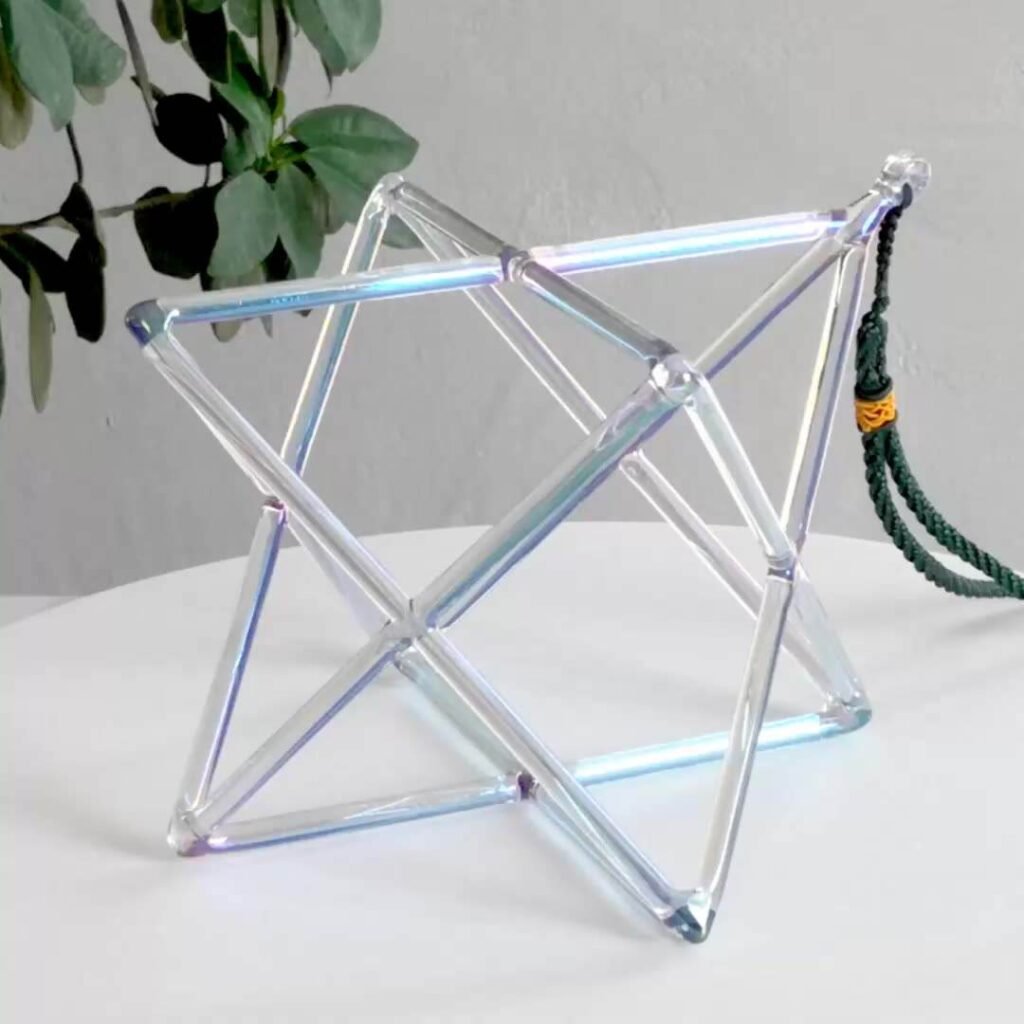
Different crystal types bring distinct energetic properties and practical characteristics to merkaba form, making the choice of crystal material as important as the geometric precision and craftsmanship quality. Understanding these variations helps you select merkabas that align with your specific intentions and applications.
Clear quartz merkabas offer unparalleled versatility and represent an excellent choice for practitioners seeking universal applicability. Clear quartz is renowned for its ability to amplify energy, clarify intention, and work harmoniously with other crystals, making merkabas crafted from this material particularly effective for general meditation and energy work applications.
The neutral energetic signature of clear quartz allows these merkabas to adapt to various intentions without imposing specific energetic directions. This adaptability makes clear quartz merkabas ideal for practitioners who work with multiple healing modalities or who prefer tools that can serve diverse purposes depending on the situation and need.
Clear quartz also demonstrates excellent optical properties that showcase the geometric precision of well-crafted merkabas. The transparency allows full appreciation of the internal structure and symmetry while creating beautiful light effects when positioned in natural or artificial lighting.
Amethyst merkabas bring powerful spiritual and meditative properties that enhance contemplative practices and psychic development. The natural violet color of amethyst creates visually striking merkabas while providing energetic support for meditation, spiritual insight, and connection with higher consciousness states.
Many practitioners find amethyst merkabas particularly effective for evening meditation practices or when working to quiet mental chatter and achieve deeper meditative states. The calming influence of amethyst combined with the focusing power of merkaba geometry creates tools that support sustained, peaceful concentration.
Amethyst’s moderate hardness makes it well-suited for precision cutting while maintaining durability for regular handling. Quality amethyst merkabas should display rich, even color saturation without significant color banding or pale areas that might indicate lower-grade material.
Rose quartz merkabas specialize in emotional healing and heart-centered practices, making them valuable tools for self-love work, relationship healing, and emotional balance cultivation. The gentle pink color creates aesthetically pleasing pieces that work well in both meditation and decorative applications.
The soft, nurturing energy of rose quartz helps create safe spaces for emotional exploration and healing work. Rose quartz merkabas often appeal to practitioners working with inner child healing, relationship issues, or anyone seeking to develop greater self-compassion and emotional resilience.
Consider that rose quartz can be more prone to scratching than harder crystals, so rose quartz merkabas may require more careful handling and storage to maintain their polished appearance over time.
Citrine merkabas bring energizing, abundance-attracting properties that make them popular for manifestation work and energy amplification practices. The golden yellow color creates visually warm and inviting pieces that add positive energy to any space while providing specific support for prosperity and success intentions.
Natural citrine displays subtle color variations that can create unique visual appeal in merkaba form, while heat-treated citrine offers more consistent coloration at generally lower cost. Both varieties provide similar energetic properties, though some practitioners prefer the subtle variations of natural citrine.
Citrine’s good hardness characteristics support precise geometric cutting while providing durability for regular use. Quality citrine merkabas should display clear, attractive color without muddy or overly dark areas that might indicate poor material selection.
Smoky quartz merkabas excel in grounding and protection applications, making them valuable tools for practitioners who work with high-energy practices or who need support in maintaining energetic boundaries. The smoky coloration ranges from light gray to deep brown, creating merkabas with sophisticated, earthy appeal.
The grounding properties of smoky quartz help balance the amplifying effects of merkaba geometry, creating tools that enhance spiritual practice while maintaining connection to physical reality. This combination works particularly well for practitioners who need support in integrating spiritual insights into daily life.
Smoky quartz’s excellent hardness and durability make it ideal for merkabas intended for frequent handling or transportation. The darker coloration also helps hide minor scratches or wear that might be more visible on lighter crystals.
Matching crystal type to intended use requires honest assessment of your primary goals and applications for the merkaba. Consider whether you need general versatility, specific energetic support, or particular aesthetic qualities that align with your space and practice requirements.
Many practitioners find value in acquiring merkabas of different crystal types over time, allowing them to select the most appropriate tool for specific situations or energy work needs. This approach provides flexibility while supporting deeper exploration of how different crystal energies interact with sacred geometric forms.
Research the metaphysical properties of crystal types that interest you, but also trust your intuitive response to different options. The merkaba that feels most appealing or resonant often proves most effective in practice, regardless of theoretical considerations about crystal properties.
Size and Proportions for Different Applications
The size and proportions of your crystal merkaba significantly influence both its practical usability and energetic impact, making careful consideration of these factors essential for choosing a piece that serves your specific needs effectively. Different applications benefit from different size ranges, each offering unique advantages and considerations.
Personal meditation sizes, typically ranging from 1 to 3 inches, provide optimal portability and intimate handling characteristics that support personal spiritual practices. These compact merkabas fit comfortably in the hands during meditation, allowing for easy positioning and manipulation while maintaining the essential geometric properties that make merkabas effective meditation tools.
Small merkabas work exceptionally well for practices that involve holding the piece during meditation or carrying it for energetic support throughout daily activities. Their size makes them practical for travel, allowing practitioners to maintain consistent energy work regardless of location or circumstances.
The intimate scale of small merkabas creates focused, concentrated energy that works well for personal healing and individual meditation practices. While they may lack the commanding presence of larger pieces, their accessibility and ease of use often make them more frequently utilized than larger alternatives that require more formal setup and positioning.
Consider that very small merkabas may be more challenging to appreciate visually, particularly regarding geometric details and crystal clarity. Ensure that your chosen size allows adequate appreciation of the craftsmanship and beauty that drew you to the piece initially.
Desktop and altar display options, generally measuring 3 to 6 inches, strike an excellent balance between visual presence and practical management. These medium-sized merkabas provide sufficient visual impact to serve as focal points for meditation spaces while remaining manageable for regular repositioning and care.
Medium merkabas work well for shared meditation spaces where multiple practitioners need to appreciate the piece simultaneously. Their size ensures visibility from reasonable distances while maintaining the detailed geometric beauty that makes merkabas visually compelling.
These sizes also integrate well with other crystal displays and altar arrangements, providing substantial presence without overwhelming smaller pieces or requiring excessive space allocation. The proportions work particularly well for photography and documentation of crystal collections or healing spaces.
Consider the available space in your intended display area when evaluating medium-sized options. Ensure adequate room for safe placement with buffer space that prevents accidental contact with other objects that might cause damage.
Professional therapy room sizes, typically exceeding 6 inches, provide commanding presence and powerful energetic influence suitable for healing centers, group meditation spaces, and professional therapeutic environments. These impressive merkabas serve as anchor pieces that help establish the energetic tone of the entire space.
Large merkabas often become conversation pieces that help explain sacred geometry concepts and crystal healing principles to clients or students. Their substantial presence commands attention and respect while demonstrating the practitioner’s commitment to quality tools and serious spiritual practice.
The energetic influence of large merkabas extends much further than smaller pieces, making them capable of affecting entire rooms rather than just immediate proximity areas. This expanded influence can be particularly valuable in group healing work or large meditation spaces where many people need energetic support simultaneously.
However, large merkabas require significant storage space, careful handling, and substantial investment. Consider whether your practice genuinely benefits from this scale or whether the investment might be better distributed across multiple smaller pieces or different types of healing tools.
Portability versus presence considerations create important trade-offs that influence size selection decisions. Highly portable merkabas enable consistent practice and energy work regardless of location but may lack the visual and energetic impact needed for certain applications.
Stationary pieces provide maximum presence and energetic influence but limit your flexibility to relocate or travel with your tools. Many practitioners find value in maintaining both portable and stationary pieces that serve different aspects of their spiritual practice.
Consider your lifestyle patterns and practice preferences when weighing portability factors. Frequent travelers may prioritize smaller, more durable pieces, while practitioners with dedicated healing spaces might emphasize presence and visual impact over mobility.
Storage and display requirements vary dramatically with size, influencing both the practical aspects of ownership and the long-term care requirements for your merkaba. Smaller pieces require minimal storage space but may need protective cases or designated areas to prevent loss or damage.
Larger merkabas need dedicated display areas with stable surfaces and protection from accidental contact. Consider the lighting, background, and surrounding elements that will enhance or detract from your merkaba’s visual appeal and energetic effectiveness.
Budget implications of different sizes reflect both material costs and craftsmanship complexity. Larger merkabas require more crystal material and more extensive cutting and polishing work, naturally resulting in higher prices for equivalent quality levels.
However, the cost per unit volume often decreases with size, making larger merkabas potentially better value from a purely material perspective. Balance these economic considerations against your actual needs and intended applications to make cost-effective decisions that provide genuine value for your specific situation.
Quality Assessment and Authentication
Distinguishing between genuine, high-quality crystal merkabas and inferior alternatives requires systematic evaluation of multiple quality indicators and authentication factors. Developing these assessment skills protects your investment while ensuring you acquire tools that provide lasting satisfaction and effectiveness.
Identifying genuine crystal versus synthetic materials begins with understanding the characteristics that distinguish natural crystals from artificial alternatives. Natural crystals typically display subtle variations in color, clarity, and internal structure that reflect their geological formation processes, while synthetic materials often appear unnaturally perfect or uniform.
Examine the piece under magnification if possible, looking for natural inclusions, growth patterns, or minor irregularities that indicate authentic crystal formation. Synthetic materials may display artificial color uniformity, unusual clarity, or manufacturing marks that reveal their artificial origin.
Temperature testing can provide additional authentication information, as natural crystals typically feel cooler to the touch than glass or synthetic alternatives and warm more slowly when handled. This test requires experience with different materials but can provide valuable confirmation of authenticity.
Research the typical characteristics of your chosen crystal type, including expected color ranges, common inclusions, and natural formation patterns. This knowledge helps you identify specimens that fall outside normal parameters and might indicate synthetic or treated materials.
Evaluating cut precision and geometric accuracy requires systematic measurement and comparison of the merkaba’s proportions against ideal geometric standards. Use calipers or rulers to verify that opposite faces are parallel, edges meet at correct angles, and overall proportions match expected merkaba geometry.
Check that all eight triangular faces are identical in size and shape, with consistent edge lengths and angles throughout the structure. Any significant variations may indicate poor craftsmanship or cutting errors that affect both appearance and energetic properties.
Examine the sharpness and consistency of edges and points, which should display clean, precise definition without chipping, rounding, or irregularities. Quality cutting produces edges that feel sharp to careful touch while maintaining consistent geometry throughout the structure.
The intersection points where multiple edges meet deserve particular attention, as these complex junctions often reveal the overall quality of the cutting and finishing work. Clean, precise intersections indicate skilled craftsmanship, while gaps, overlaps, or rough areas suggest inferior workmanship.
Surface quality and finish inspection involves examining all faces under various lighting conditions to identify scratches, polishing irregularities, or other surface defects that might detract from appearance or functionality. Quality polishing should produce surfaces that feel smooth and display consistent light reflection.
Look for polishing marks, tool scratches, or dull areas that indicate incomplete finishing work. Professional polishing should eliminate visible tool marks while creating surfaces that enhance the crystal’s natural beauty and optical properties.
Check for any cloudiness, haziness, or loss of transparency that might indicate poor polishing techniques or material defects. Quality crystal merkabas should display the full optical beauty of their material without surface treatments that diminish clarity or brilliance.
Examining edges and points reveals polishing quality in areas where the work becomes most technically challenging. Quality finishing maintains consistent polish quality even in difficult areas, while inferior work often shows roughness or incomplete polishing at edges and intersection points.
Checking for structural integrity involves careful inspection for existing damage and assessment of potential vulnerability to future damage. Look for stress fractures, chips, or other damage that might indicate rough handling or inherent weaknesses in the crystal material.
Test the stability of the piece when placed on flat surfaces, ensuring that geometric accuracy translates to practical stability during display and use. Poorly proportioned merkabas may rock or tip unpredictably, creating handling difficulties and potential damage risks.
Evaluate the overall feel and balance of the piece, which should reflect the geometric symmetry in weight distribution and handling characteristics. Well-crafted merkabas feel solid and balanced, while inferior pieces may feel awkward or unsteady when handled.
Understanding grading systems and certifications helps navigate quality claims and pricing structures across different suppliers. Some dealers use grading systems that classify crystal quality, cutting precision, or overall craftsmanship levels, though these systems may vary between suppliers.
Research any certifications or guarantees offered with your potential purchase, understanding what they cover and how they protect your investment. Reputable dealers typically stand behind their quality claims with reasonable return policies and customer support.
Red flags that indicate poor quality include unusually low prices that seem inconsistent with claimed quality levels, vague or missing quality descriptions, reluctance to provide detailed photographs or measurements, and sellers who cannot answer specific questions about their products.
Be cautious of sellers who use excessive marketing language without providing concrete quality information, or who make unrealistic claims about their products’ properties or origins. Quality merkabas sell themselves through demonstrated excellence rather than exaggerated marketing claims.
Practical Uses and Placement Guidelines
Understanding how to effectively use and position your crystal merkaba maximizes its energetic potential while ensuring safe, appropriate integration into your spiritual and healing practices. Proper placement and usage guidelines help you derive maximum benefit from your investment while maintaining the piece in optimal condition.
Setting up merkabas for meditation spaces requires consideration of both energetic flow and practical accessibility. Position your merkaba where it can be easily seen and accessed during meditation while avoiding areas where it might be accidentally disturbed or damaged by movement or other activities.
Many practitioners find that placing merkabas at eye level or slightly above creates optimal visual connection during meditation, while positioning them within arm’s reach allows for occasional handling or repositioning as needed during practice sessions.
Consider the lighting conditions in your meditation space, as crystal merkabas can create beautiful light effects when properly illuminated. Natural light often produces the most attractive effects, while artificial lighting should be positioned to avoid harsh glare or shadows that might detract from the piece’s beauty.
The background against which your merkaba is displayed affects both its visual impact and energetic integration into the space. Neutral backgrounds often work best for showcasing geometric details, while colored backgrounds should complement rather than compete with the crystal’s natural coloration.
Integration with other crystal arrangements creates opportunities for synergistic energetic effects while requiring careful attention to spacing, proportion, and energetic compatibility. Merkabas often work well as central focal points in crystal grids or healing layouts, where their geometric precision can anchor and organize the energies of surrounding pieces.
When combining merkabas with other crystals, consider the size relationships and ensure that the merkaba’s geometric form remains clearly visible and appreciated. Overcrowding can diminish the visual impact of all pieces while potentially creating energetic confusion rather than harmony.
Research crystal compatibility if you plan to create specific healing or manifestation layouts that include your merkaba. Some crystal combinations enhance each other’s properties, while others may create energetic conflicts that reduce overall effectiveness.
Optimal positioning for energy work depends on your specific practices and intentions, but general principles can guide effective placement decisions. Many practitioners position merkabas to align with specific directional energies, cardinal points, or sacred geometry principles that enhance their intended applications.
For personal energy work, experiment with different positions relative to your body during meditation or healing sessions. Some practitioners prefer merkabas positioned directly in front of them at heart level, while others find placement above the head or to the side more effective for their particular practice style.
Group energy work may benefit from central positioning that allows all participants equal access to the merkaba’s energetic influence, or from multiple smaller merkabas positioned to create geometric patterns that enhance the overall energy field of the space.
Care and maintenance requirements for crystal merkabas include regular cleaning, careful handling, and appropriate storage when not in use. Dust and debris can accumulate in the geometric angles and intersection points, requiring gentle cleaning with soft brushes or cloths to maintain optimal appearance and energetic flow.
Use only appropriate cleaning methods for your specific crystal type, as some materials may be sensitive to water, cleaning solutions, or particular handling techniques. Research the care requirements for your merkaba’s crystal material to avoid damage from inappropriate cleaning methods.
Handle your merkaba with care, particularly around the sharp points and edges that are most vulnerable to chipping or damage. Consider using padding or protective surfaces when moving or repositioning the piece, and store it in protective cases or designated areas when not actively in use.
Creating sacred geometry displays allows you to incorporate multiple geometric forms and crystal types into unified presentations that demonstrate the mathematical principles underlying sacred geometry while creating powerful energetic focal points for healing and meditation spaces.
Research traditional sacred geometry layouts and proportions if you want to create displays that follow established principles, or experiment with your own arrangements that feel intuitively appropriate for your space and intentions.
Document successful arrangements with photographs and measurements, allowing you to recreate effective layouts or share them with other practitioners who might benefit from your discoveries and experiments.
Professional therapeutic applications require additional considerations for client safety, hygiene, and effectiveness. Ensure that your merkaba is positioned where it cannot be accidentally knocked over or cause injury to clients, while maintaining optimal energetic influence over the treatment area.
Consider having multiple merkabas available for different types of sessions or client needs, allowing you to select the most appropriate piece for specific healing intentions or energetic requirements.
Maintain professional standards for cleanliness and energetic clearing between client sessions, using appropriate methods to ensure that your merkaba remains energetically neutral and physically clean for each new client interaction.
Where to Purchase and What to Avoid
Selecting reliable sources for your crystal merkaba purchase significantly impacts both the quality of your acquisition and the overall buying experience. Understanding how to identify trustworthy dealers while avoiding problematic sellers protects your investment and ensures satisfaction with your purchase.
Reputable crystal dealers and specialty shops typically demonstrate their credibility through extensive product knowledge, detailed quality information, and willingness to answer technical questions about their merchandise. Established dealers often maintain relationships with reliable suppliers and can provide information about the origin and characteristics of their crystal merkabas.
Look for dealers who provide comprehensive product descriptions including crystal type, dimensions, weight, and quality characteristics. Quality-focused sellers typically include multiple high-resolution photographs that show different angles and details of each piece, allowing informed evaluation before purchase.
Experienced dealers understand crystal properties and can provide guidance about selecting appropriate pieces for specific applications or intentions. Their expertise can be particularly valuable for first-time buyers who need education about quality factors and practical considerations.
Research dealer reputations through customer reviews, industry associations, and recommendations from other practitioners. Established dealers typically maintain positive relationships with their customers and can provide references or testimonials about their products and service quality.
Online versus in-person buying considerations create different advantages and challenges that influence the purchasing experience and final satisfaction with your merkaba selection. Online purchasing offers broader selection and competitive pricing but limits your ability to physically examine pieces before purchase.
When buying online, rely heavily on detailed photographs, comprehensive descriptions, and seller reputation to evaluate potential purchases. Request additional images or information if the provided materials don’t adequately demonstrate the quality and characteristics that concern you.
Understand return policies and shipping protections before making online purchases, as crystal merkabas can be damaged during shipping and may not meet expectations when received. Quality online dealers typically provide generous return periods and comprehensive shipping insurance to protect customer investments.
In-person purchasing allows direct examination of crystal quality, geometric precision, and overall appeal before making purchase decisions. The ability to handle pieces, examine them under different lighting conditions, and compare multiple options often leads to more satisfying selections.
Warning signs of unreliable sellers include vague product descriptions, reluctance to provide additional information or photographs, significantly below-market pricing without clear explanation, and poor customer service responsiveness during the sales process.
Be particularly cautious of sellers who make exaggerated claims about their merkabas’ properties, origins, or uniqueness without providing supporting evidence. Quality pieces sell themselves through demonstrated excellence rather than marketing hyperbole.
Avoid sellers who cannot answer basic questions about their products, such as crystal type, dimensions, origin, or quality characteristics. This lack of knowledge often indicates either inexperience or intentional misrepresentation that may lead to disappointing purchases.
Poor website design, limited contact information, or absence of clear business policies may indicate unreliable sellers who lack the professionalism and stability needed for satisfactory customer relationships.
Importance of return policies and guarantees cannot be overstated when purchasing crystal merkabas, particularly for online transactions where physical examination is impossible before purchase. Comprehensive return policies demonstrate seller confidence in their products while protecting customers from disappointing purchases.
Understand the specific terms of return policies, including time limits, condition requirements, and responsibility for return shipping costs. Some sellers require returned items to be in original condition and packaging, while others may accept returns even after handling and evaluation.
Warranty coverage for structural defects or misrepresented quality characteristics provides additional protection for your investment, particularly for higher-priced pieces where quality expectations are correspondingly higher.
Building relationships with trusted suppliers creates long-term advantages including access to new inventory, priority notification of special pieces, and personalized service that helps you find exactly what you need for your evolving practice and collection.
Loyal customers often receive preferential treatment including advance notice of new arrivals, special pricing on exceptional pieces, and expert guidance in selecting pieces that match their developing interests and applications.
Consider developing relationships with multiple suppliers to access different specialties, price ranges, and selection options while maintaining backup sources if your primary suppliers experience inventory limitations or other business changes.
Maintain realistic expectations about pricing and availability, understanding that genuine quality commands appropriate prices while exceptional pieces may be rare and command premium pricing that reflects their uniqueness and superior characteristics.
Conclusion
Choosing the perfect crystal merkaba represents an investment in both your spiritual practice and personal well-being, making careful selection essential for long-term satisfaction and effective use. The geometric precision, crystal quality, and energetic properties of your chosen merkaba will influence your meditation experiences and healing work for years to come.
Remember that the most important selection criteria include crystal authenticity, geometric accuracy, appropriate sizing for your intended applications, and purchase from reputable dealers who stand behind their products. While aesthetic appeal naturally draws initial attention, the underlying quality factors determine lasting satisfaction and effectiveness.
Your merkaba selection should ultimately reflect both practical considerations and intuitive resonance with specific pieces that speak to your personal energy and spiritual aspirations. Trust your instincts while applying the technical evaluation criteria discussed in this guide to ensure both emotional and practical satisfaction with your choice.
Whether you’re acquiring your first merkaba or adding to an established collection, take time to thoroughly evaluate options and purchase from sources that demonstrate expertise, integrity, and commitment to customer satisfaction. The right merkaba will become a treasured tool that supports and enhances your spiritual journey for many years.
Begin your search with clear intentions about your needs and applications, but remain open to discoveries and connections that might lead you toward pieces that exceed your initial expectations. Your perfect crystal merkaba awaits, ready to become a powerful ally in your ongoing exploration of sacred geometry, crystal healing, and meditative practice.


